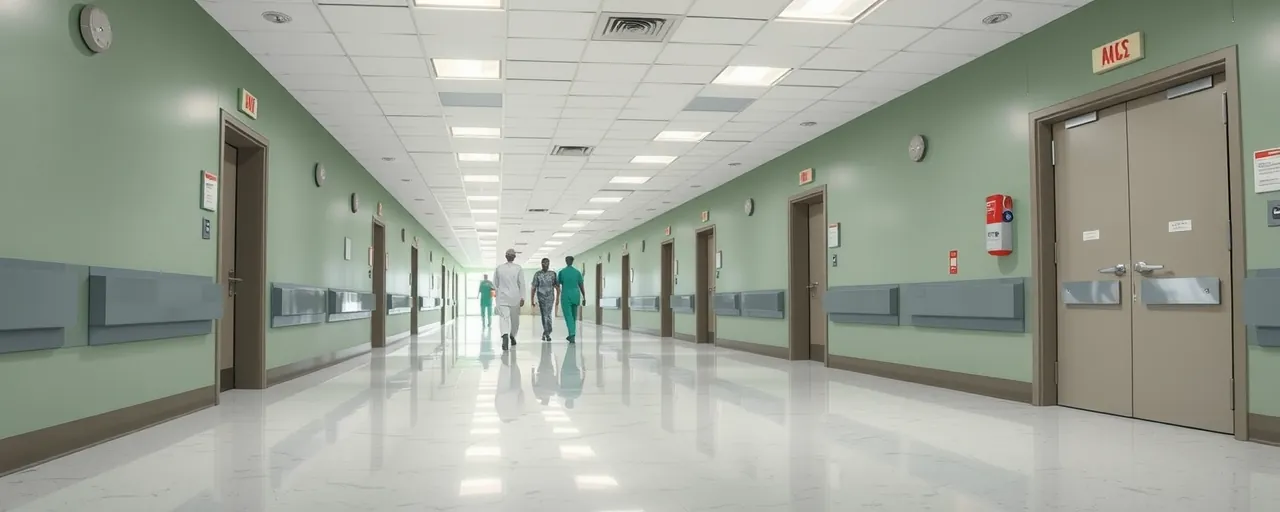Top Marks for Military Healthcare
Sixteen military hospitals across the United States have achieved an 'A' rating in the Spring 2025 Leapfrog Hospital Safety Grade assessment, placing them among the safest healthcare facilities nationwide. With 73% of eligible military hospitals earning the top grade, compared to 32% of all participating hospitals, the Defense Health Agency celebrates a significant milestone in its mission to provide high-quality care to 9.6 million beneficiaries, including service members and their families.
The Leapfrog Group, an independent organization focused on healthcare quality, assesses hospitals using over 20 evidence-based measures, such as infection rates and surgical errors. These ratings reflect the Defense Health Agency’s dedication to transparency and accountability, ensuring patients receive care that meets rigorous national standards.
This achievement stems from a deliberate effort launched seven years ago, when the Defense Health Agency began incorporating Leapfrog’s evaluations into its quality assurance program. Walter Reed National Military Medical Center served as the initial testing ground, and its success paved the way for broader participation among eligible military facilities.
The Value of Safety Ratings
Leapfrog’s safety grades provide patients with a clear, accessible measure of hospital performance. Updated twice annually and publicly available, these ratings highlight risks like preventable medical errors, empowering individuals to make informed healthcare decisions. For military families, who often face frequent relocations, such transparency fosters confidence in unfamiliar medical facilities.
The high ratings also demonstrate the Military Health System’s ability to match or surpass civilian healthcare standards. Hospitals like Madigan Army Medical Center in Washington and Naval Medical Center Portsmouth in Virginia exemplify this through standardized protocols and advanced electronic health records. However, some military facilities did not meet Leapfrog’s reporting criteria, prompting questions about how safety is maintained at those sites.
Dr. Paul Cordts, the Defense Health Agency’s chief medical officer, explained that internal safety standards align with Leapfrog’s for non-qualifying facilities. This ensures consistent care quality across the system, reinforcing trust in military healthcare.
Navigating Systemic Challenges
Despite these accolades, the Military Health System grapples with significant obstacles. A 12% budget reduction over the past decade, against 5.1% annual medical inflation, has strained resources. Staffing shortages, intensified by the COVID-19 pandemic, have further complicated operations, with reports noting only 10% of military surgeons are combat-ready, raising concerns about readiness for future conflicts.
These issues fuel discussions about the system’s sustainability. Some policymakers advocate for centralized management or a shift to contribution-based benefits to manage costs and enhance preparedness. Others highlight the system’s efficiency, pointing out its per-beneficiary spending of approximately $5,200, which compares favorably to civilian providers while delivering strong outcomes.
These tensions reflect broader healthcare debates about balancing quality with financial constraints. Nationwide, hospitals are seeing gains in patient safety and experience through efforts like the American Hospital Association’s Patient Safety Initiative, suggesting shared challenges and opportunities across systems.
Lessons for Civilian Healthcare
The Military Health System’s safety achievements raise a compelling question: can its successes inform civilian healthcare? Proponents of government-led healthcare praise the system’s cost-effective, high-quality care, driven by standardized processes and transparency. Conversely, advocates for market-based reforms argue that fostering competition and consumer choice could achieve similar results without expanding public programs.
Transparency is increasingly central to civilian healthcare, with initiatives like the Centers for Medicare & Medicaid Services’ quality reporting and mandatory price disclosure requirements encouraging hospitals to share performance data. These efforts, much like Leapfrog’s role in the military, aim to improve care through accountability and public scrutiny.
Translating military healthcare lessons to civilians, however, is complex. The Military Health System benefits from a unified structure and defined patient population, unlike the diverse civilian landscape. Crafting policies to bridge this gap demands careful consideration of access, equity, and innovation.
A Path Forward
The Leapfrog grades mark a proud moment for the Defense Health Agency, yet they also underscore ongoing challenges. Sustaining high safety standards amid budget pressures and staffing shortages will require strategic investments in quality assurance and workforce development to maintain patient trust.
For the wider healthcare system, the military’s success offers valuable insights. Whether through public initiatives or market-driven reforms, the shared aim is clear: delivering safe, effective, and accessible care. The military hospitals’ achievements highlight what’s achievable when quality is prioritized, providing a blueprint for progress.
As patients, providers, and policymakers navigate these issues, the focus remains on building systems that deliver reliable care. The military’s safety grades serve as a reminder of what dedication to excellence can accomplish, inspiring efforts to elevate healthcare for everyone.
